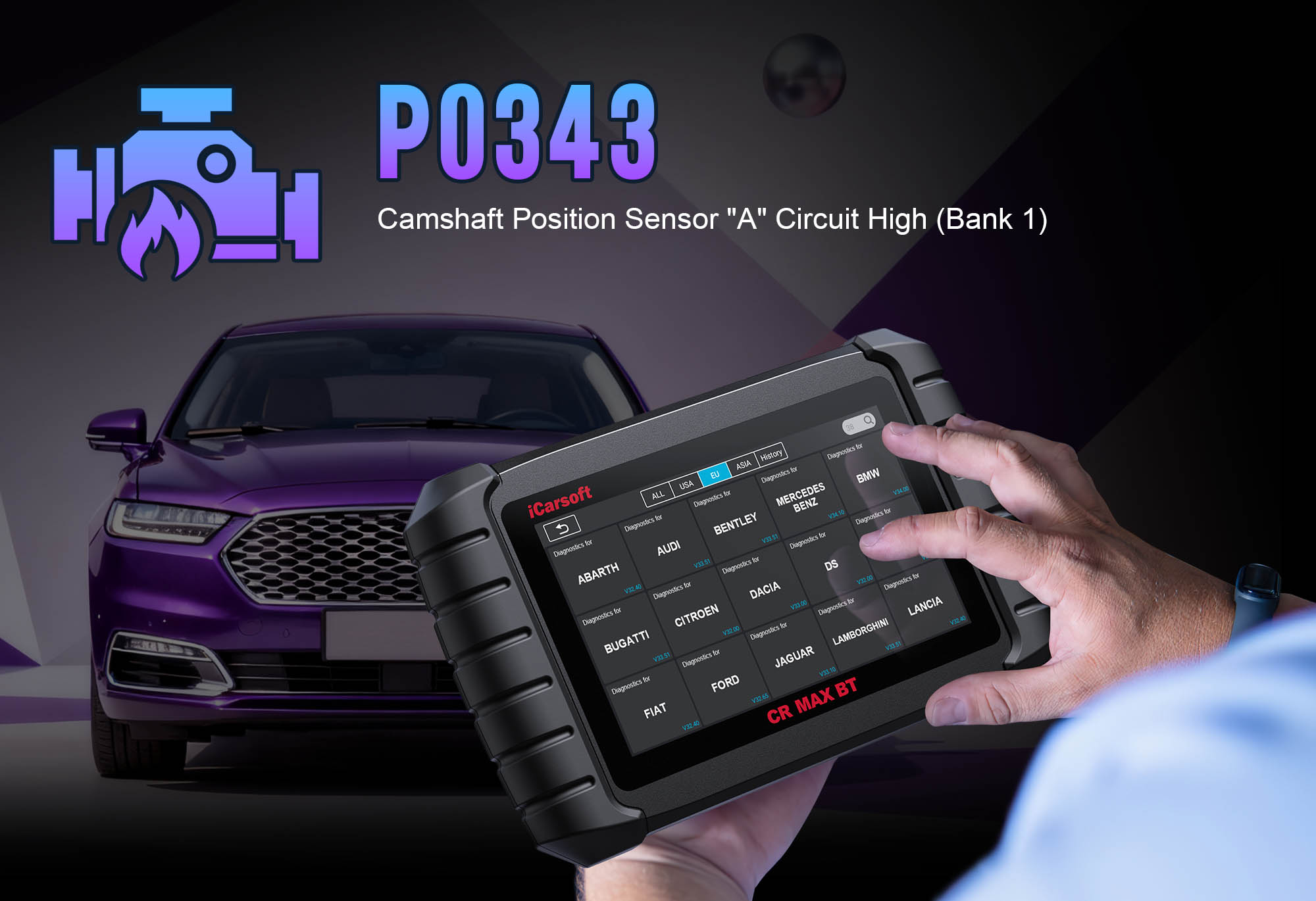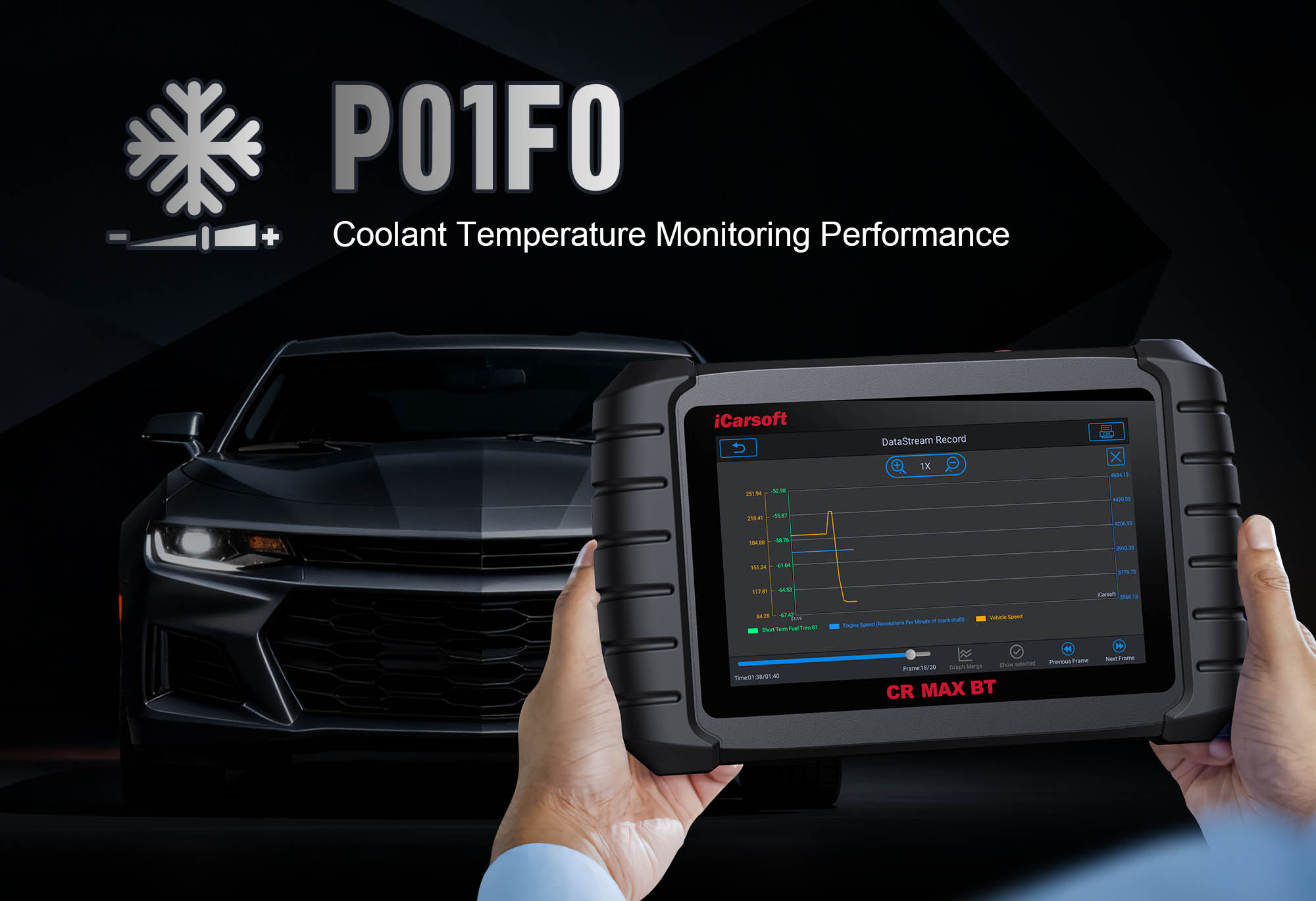Understand & Fix P062B: Fuel Pump Control Module Relay Control Circuit High with iCarsoft CR Ultra P
If your vehicle’s check engine light illuminates, you experience difficulty starting, or the engine stalls unexpectedly, a diagnostic scan may return P062B. This OBD-II code stands for "Fuel Pump Control Module Relay Control Circuit High"—a critical fault targeting the fuel pump control module (FPCM) relay circuit. The FPCM relay regulates power to the fuel pump, ensuring it delivers the correct fuel pressure to the engine based on demand (e.g., higher pressure during acceleration). A "high circuit" error means the Engine Control Module (ECM) detects excessive voltage in this circuit, preventing the fuel pump from operating properly.
Basic scanners might only flag a "fuel pump error" but can’t test relay functionality, measure circuit voltage, or validate FPCM communication—leaving you guessing between a faulty relay, damaged wiring, or a failing FPCM. The iCarsoft CR Ultra P, with its OE-level fuel system diagnostics, bi-directional control, and real-time voltage tracking, solves this. Below, we break down P062B, its causes, symptoms, step-by-step resolution, and 8 FAQs to answer common troubleshooting questions.
What Is P062B?
P062B focuses on the fuel pump control module (FPCM) relay control circuit—a system consisting of the FPCM relay, wiring harness, connectors, and the FPCM itself. The relay acts as a switch: when the ECM sends a signal (typically 12V), the relay closes, sending power to the fuel pump. A "high circuit" error indicates the ECM detects voltage above the normal range (often >14V) in this control path. This can occur due to a shorted relay, damaged wiring, or a malfunctioning FPCM, disrupting fuel pump operation and engine performance.
Key Symptoms of P062B
-
Illuminated Check Engine Light: The primary warning sign, often paired with codes like P0230 (fuel pump primary circuit malfunction) or P062E (FPCM relay circuit low).
-
Difficulty Starting: The fuel pump may not activate, leading to no fuel delivery and extended cranking.
-
Engine Stalling: Intermittent or complete loss of fuel pressure causes the engine to shut off while driving.
-
Reduced Power: Insufficient fuel pressure limits engine output, especially during acceleration.
-
Fuel Pump Noises: A failing pump may produce whining sounds, or no sound at all when the key is turned (before cranking).
-
Fuel Pressure Drops: Low pressure (measured via a gauge) confirms the pump isn’t receiving proper power.
Common Causes of P062B
|
Cause
|
Description
|
|
Faulty FPCM Relay
|
A stuck or shorted relay coil allows excessive voltage to flow through the control circuit.
|
|
Wiring/Circuit Issues
|
Damaged wires with insulation wear, causing a short to the vehicle’s 12V power supply.
|
|
Failed FPCM
|
The fuel pump control module itself malfunctions, sending incorrect voltage to the relay.
|
|
Corroded Connectors
|
Rust or dirt in relay or FPCM connectors disrupts signal flow and causes voltage spikes.
|
|
ECM Malfunction
|
Rarely, the ECM’s internal driver for the FPCM relay circuit fails, sending excessive voltage.
|
Why iCarsoft CR Ultra P Excels at Diagnosing P062B
The CR Ultra P outperforms basic tools with features tailored to fuel system and relay circuit diagnostics:
Real-Time Voltage Tracking
Monitors FPCM relay control circuit voltage, highlighting spikes above 14V that trigger P062B.
Bi-Directional Relay Testing
Activates the FPCM relay manually to verify operation—distinguishes relay faults from wiring issues.
Circuit Resistance & Continuity Checks
Tests for shorts, overcurrent, and breaks in FPCM relay wiring with built-in multimeter functions.
Fuel System Topology Mapping
Visualizes components (FPCM, relay, fuel pump, wiring) for easy fault location.
Global Vehicle Coverage
Supports 200+ brands with electronic fuel pump control systems.
41 Hot Service Functions
Includes fuel pump priming, FPCM reset, and fuel pressure test—critical for post-repair validation.
Step-by-Step: Diagnose P062B with iCarsoft CR Ultra P
-
Confirm P062B & Gather Data
Plug the CR Ultra P into your vehicle’s OBD-II port, power on the tool, and select AutoVIN Identify to auto-detect make, model, and fuel system type (e.g., returnless, high-pressure direct injection).
Navigate to Engine > Fault Codes > Read Codes to confirm P062B. Tap Code Details for model-specific insights (e.g., "Ford F-150: FPCM Relay Control Circuit High; Voltage: 15.3V, Expected: 12V; Check Relay or FPCM Wiring").
-
Analyze Live Fuel System Data
Go to Engine > Live Data > Fuel System and monitor three key metrics:
1. FPCM Relay Control Voltage: Should read ~12V when activated. A steady reading >14V confirms P062B.
2. Fuel Pump Current Draw: Excessive current (>10A) indicates a shorted relay or pump (paired with high voltage = relay issue).
3. Fuel Pressure: Should match OEM specs (e.g., 40–60 psi for port injection). Low pressure + high relay voltage = P062B impact.
-
Test the FPCM Relay & Control Circuit
1. Use Bi-Directional Control > Fuel System > FPCM Relay Test: Send 12V command to activate the relay. Listen for clicking and check voltage stability. Spikes >14V = shorted relay.
2. Locate FPCM relay and module: Use the CR Ultra P’s Component Location tool (relay often in power distribution box; FPCM near fuel tank or engine bay).
3. Inspect & Test: Check relay for corrosion/damage or melted pins. Use the CR Ultra P’s Resistance Test on coil (should match OEM specs, e.g., 50–100 ohms—low resistance = short).
-
Inspect Wiring, Connectors, & FPCM
1. Wiring Check: Use Continuity Test on FPCM relay wiring for shorts to power. Look for damage near hot components or moving parts.
2. Connector Check: Clean FPCM and relay connectors with electrical contact cleaner. Use the CR Ultra P’s Voltage Drop Test to check for resistance in connections.
3. FPCM Function Test: Run an FPCM Self-Diagnostic (under Special Functions) with the CR Ultra P. Failed tests indicate a faulty module.
-
Repair & Clear the Code
- Replace the FPCM relay if tests confirm a short. Replace FPCM if faulty (program with CR Ultra P if required).
- Repair damaged wiring, clean corroded connectors, or replace worn components as needed.
- Use the CR Ultra P to Clear Codes and run a Fuel System Validation Test. Test drive to ensure proper starting, acceleration, and fuel pressure.
FAQs: P062B Troubleshooting
Can I drive with P062B?
No—stalling while driving poses safety risks. Use the CR Ultra P to diagnose immediately, as the issue can worsen to a no-start condition.
How much does it cost to fix P062B?
A new FPCM relay costs $15–$50, while an FPCM replacement ranges from $150–$400, plus $80–$200 for labor. The CR Ultra P saves on diagnostic fees ($100–$150).
Why does P062B keep returning after clearing it?
The root cause wasn’t fixed. Common culprits: unrepaired wiring shorts, a faulty FPCM, or a relay incompatible with the vehicle’s voltage. Use the CR Ultra P’s History Log to track recurrence.
What’s the difference between P062B (high circuit) and P062E (low circuit)?
P062B indicates excessive voltage in the FPCM relay circuit, while P062E indicates voltage below the normal range. The CR Ultra P’s voltage tracking distinguishes these faults.
How do I distinguish between a faulty relay and FPCM?
Use bi-directional testing: Relay activates + voltage spikes >14V = faulty relay; Relay doesn’t activate + voltage spikes >14V = FPCM or wiring issue.
Do I need to program the FPCM after replacement?
Yes—many vehicles require FPCM programming to sync with the ECM. Use the CR Ultra P’s FPCM Programming function (under Special Functions) for this step.
Can water damage cause P062B?
Yes—water in connectors or the FPCM can cause shorts, leading to high voltage. Use the CR Ultra P’s Circuit Resistance Test to check for water-induced damage.
Will P062B affect fuel economy?
Yes—intermittent fuel pump operation leads to inconsistent fuel delivery, increasing consumption by 15–20%. Fix P062B with the CR Ultra P to restore efficiency.
Conclusion
P062B’s fuel pump control module relay high circuit fault threatens engine operation and safety, but the iCarsoft CR Ultra P simplifies diagnosis with voltage tracking, bi-directional testing, and fuel system validation. It ensures you fix the root cause—whether it’s a shorted relay, damaged wiring, or a failing FPCM—instead of just clearing the code.
With a 10.1-inch HD touchscreen, 12600mAh long-life battery, and 3 years of free software updates, the CR Ultra P is a must-have for DIYers and mechanics. Resolve P062B, restore reliable fuel delivery, and avoid unexpected stalling—all with one professional-grade diagnostic scanner.





